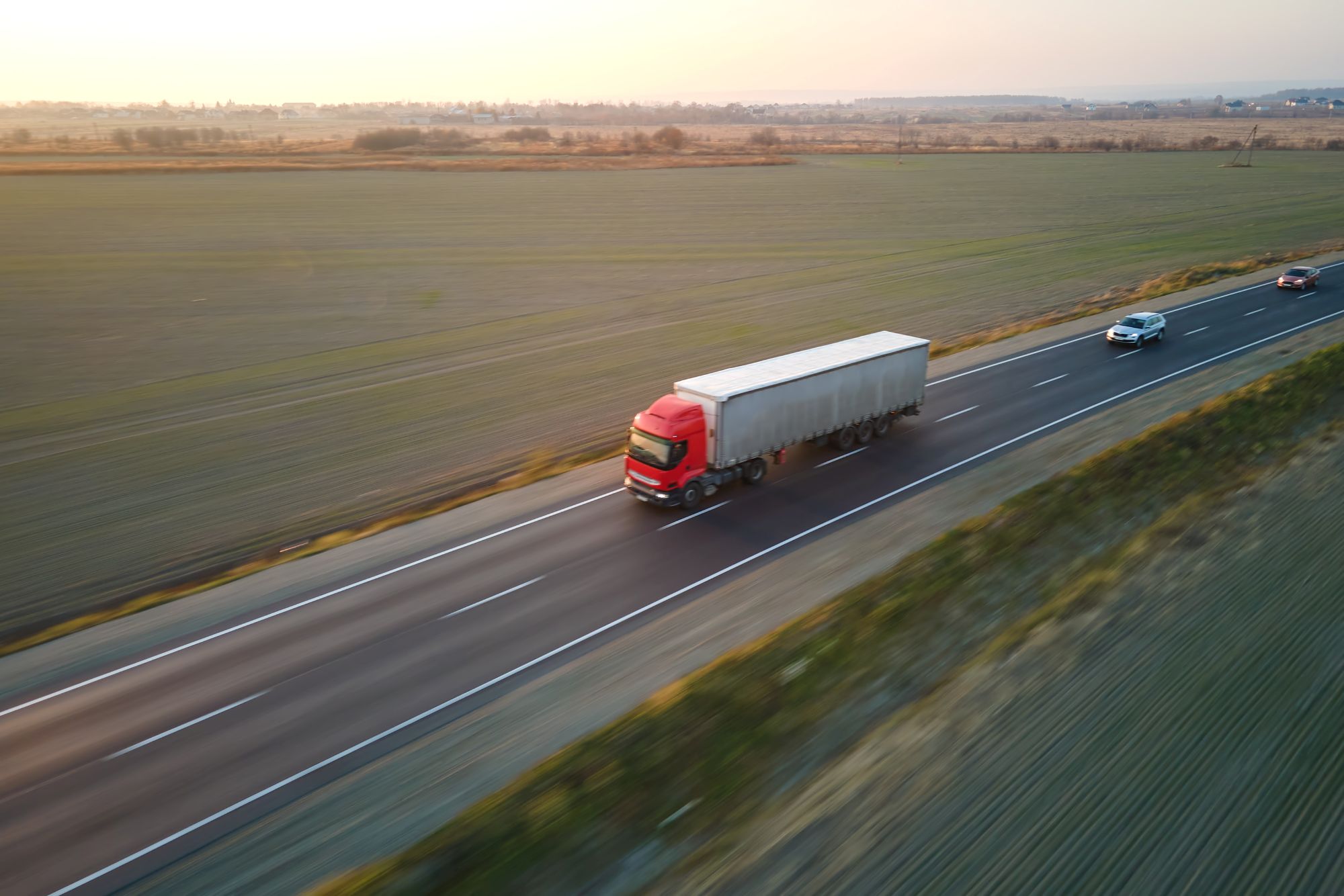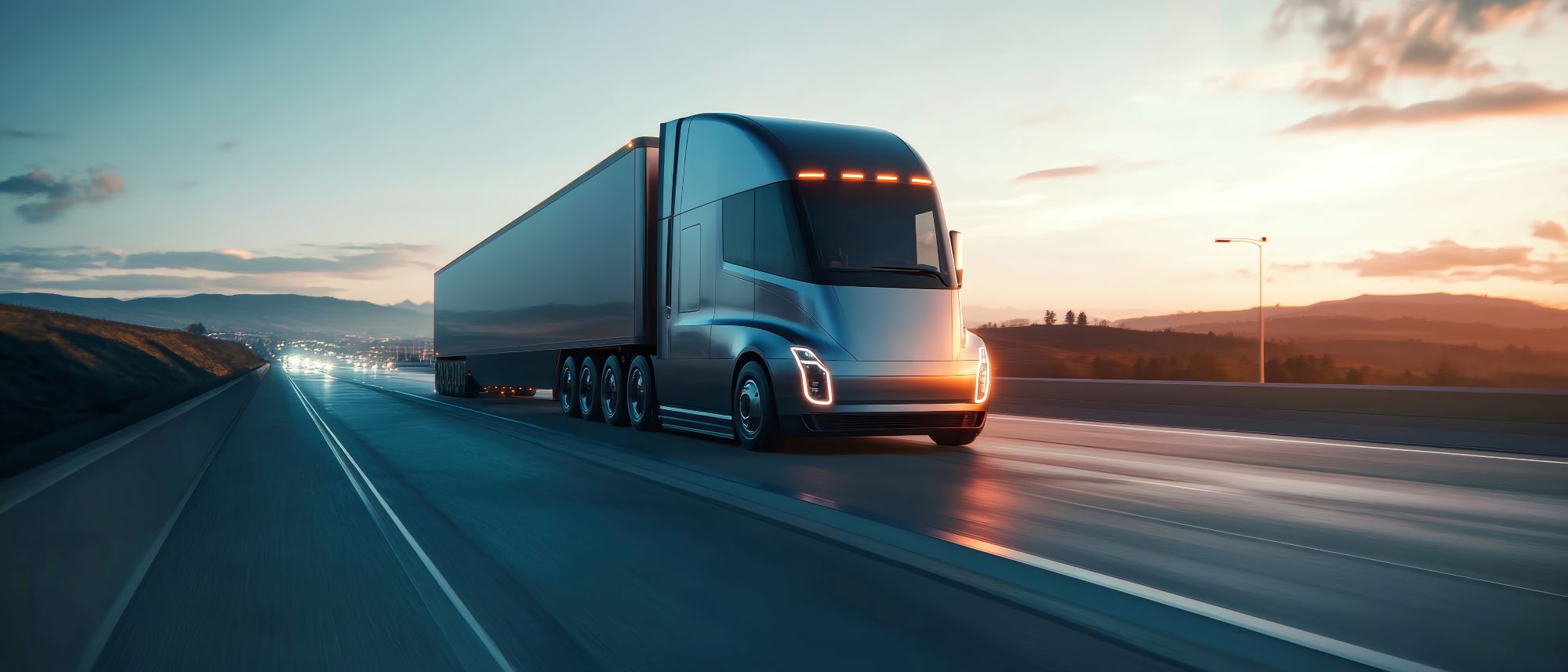
Miranda Blake
Ден на шофьорите на тежкотоварни автомобили 2025 г: Да дадем глас на шофьорите на камиони
Създаден: 22.01.2025
•
Актуализирано: 22.01.2025
На 22 януари 2025 г. се отбелязва Денят на водачите на тежкотоварни автомобили. Създаден от NN1 Personnel (набиращи персонал и доставчици на шофьори на камиони в логистичната индустрия), денят има за цел да отпразнува шофьорите и всичко, което те правят за икономиката и обществото.
Без шофьорите на камиони, които често изпитват различни трудности в работата си (включително отсъствие от семействата и дома си, дълги работни часове и пътуване в екстремни климатични условия), бихме останали без необходимите ни продукти и удобства. Те наистина са герои през последните няколко години, както и преди това - пандемията беше само един пример за това.
Начинът, по който ще отбележите този ден, зависи от вас. NN1 Персоналът препоръчва да проявявате доброта, например като предоставяте на шофьорите топла напитка или разговаряте с тях.
В SNAP винаги се стремим да дадем гласност на шофьорите на камиони. И така, за този Ден на шофьорите на тежкотоварни автомобили правим точно това. След неотдавнашна публикация на нашата страница във Facebook, в която се задаваше въпрос за недостига на шофьори и как да се гарантира, че младите хора имат ентусиазма да се присъединят към индустрията, ние подчертаваме някои от коментарите на шофьори на камиони, които показват техния реален опит - от предизвикателствата, пред които са изправени, до това какво обичат в работата си.
Баланс между професионалния и личния живот
Ключов въпрос, за който говорят шофьорите, е как ролята им се отразява на личния им живот, като например, че не могат да присъстват на важни моменти от живота си, че трябва да спят в кабината си и че парите не си заслужават жертвите, които правят.
"Шофирането на камион винаги е било с лошо заплащане, дълги часове и почти никакъв социален живот. Съвременните млади хора няма да се примирят с глупавите часове, тъй като повечето от тях имат живот извън работата. "
"Не бих го препоръчал, освен ако не е в кръвта ви. Това не е като обикновена работа, а начин на живот. Трябва да разбирате в какво се впускате. Нямате редовни часове за започване и приключване на работа като в завод. Всичко е свързано с естеството на работата. От теб се очаква да правиш 15-часови смени и нощи в кабината, тъй като работата го изисква - и да прецакаш домашния си живот. "
"Средно 70 часа седмично за 50 хил. паунда годишно просто вече не си заслужава. Минималната заплата бързо настига средната заплата на шофьор на камион, така че просто ще работя извънредно в някоя фабрика за подобни пари и ще виждам жена си всяка вечер. "
"Да работиш 60/65 часа седмично, 3/4 вечери навън, никакъв социален живот - за парите, които изкарваш, можеш да подреждаш рафтове в Aldi и да имаш живот. Новите шофьори, които започват да карат, не искат толкова много часове или нощи навън за парите, които печелите, факт. Така че, когато компаниите започнат да плащат повече на шофьорите, те ще започнат да си намират шофьори. "
"Колко от тези, които са започнали по едно и също време с мен, са продължили да работят в бранша? На колко съпруги им е омръзнало да не виждат съпрузите си? На колко шофьори им омръзна да не виждат съпругите и децата си? "
"Защо младите шофьори навлизат в бранша? Дълги часове, ниско заплащане - те могат да печелят по-добре и да имат по-общителен живот, ако се обучават за нещо друго. За съжаление, за мен вече е твърде късно. "
Статистическите данни потвърждават обратната връзка. Например, установено е, че шофьорите на камиони работят средно по 48 часа всяка седмица - в сравнение с 37,5 часа за всички служители, това е със значителни 28% повече. И затова не е изненадващо само една трета от шофьорите смятат, че работодателите им подкрепят баланса между професионалния и личния им живот. Не е шокиращ и фактът, че такъв значителен брой хора са напуснали сектора, включително 67,21% от хората на възраст под 30 години, които са сложили високопроходимите си очила в рамките на една година след пандемията.
Живот след камиона
Някои от коментиращите са се преместили от индустрията в други роли, които ги правят по-щастливи.
"Получавам по-висока заплата във фабрика за обработка на части... и знам кога отивам и кога се прибирам вкъщи, така че няма смисъл. "
"Свидетелството ми за правоуправление и CPC просто стоят в портфейла ми. Сега уча хората да карат коли. "
"Не ми липсва нито за миг. Лицензът е все още валиден. Оставете CPC да си отиде. Достатъчно ми е. "
"Години наред бях в клас 1 и не бих се върнал към него, защото мога да печеля същите пари и да имам семеен живот във фабрика. Просто вече не си струва!"
"Връщам се към шофирането на автобуси, тъй като там, където живея, се плаща повече на час. След 15 години шофиране на тежкотоварни камиони напълно обичам осемчасовите смени. Човек не осъзнава какво губи от качественото време, прекарано извън работа, докато не го изпита отново. "
По стъпките на семейството
Други пък си спомнят за хубавите спомени от пътуването в камиони с бащите им като деца, за стойността на това и за това как този опит ги е накарал да се присъединят към сектора, след като са завършили образованието си.
"Мисля, че индустрията масово не се замисля как са възпитани 21-годишните. Навремето те ходеха с бащите си на камиони. Момчетата в камиона развиваха също толкова много мозъчни умения, но гледаха номера на пътя. "
"Когато престанаха да позволяват на децата да се возят с бащите си във вагона по време на празниците, тогава младите хора спряха да се интересуват. Нека си признаем: няма точно такъв финансов стимул за присъединяване, нали? "
"Никога не съм имал училищна ваканция, без да пътувам с баща ми с камиона. "
"Те познаваха работата отвътре, преди да напуснат училище. "
"Беше страхотно да отида в Белгия с баща ми. Обединени превозвачи за агенция, наречена Protem Ltd, от Кент. След това в Marley Extrusions. След това, а и сега, съм помощник-шофьор, без да имам книжка - искаше ми се да имам, но зрението ми не е добро, така че правя следващото най-добро нещо като помощник-шофьор. Обичам да съм в камионите си. "
Страст към работата
По подобен начин мнозина не се съгласиха, че работата на шофьора на камион не е идеална - независимо дали заради парите или просто заради любовта им към шофирането на камион.
"Работя по три вечери седмично за основна заплата от 45 хил. паунда годишно. Покажете ми друга работа, която бих могъл да си намеря с двуседмично обучение и която да ми носи такова възнаграждение!"
"Вече почти 49 години съм в играта на танкери и все още работя през уикендите на 74 години с една нощна почивка седмично и мога да ви уверя, че има недостиг на добри мъже в индустрията. Много добри хора са починали преди да им дойде времето. Ако можех, определено бих направил всичко отново. "
"Това е професия, която или харесваш, или не. На мен ми доставяше удоволствие да я върша в продължение на много години и отсъствах по 4-6 седмици. Много може да зависи от това към коя компания се присъедините. Аз бях в моята 32 години. "
"Преминах през HGV на 19 години. Вече почти три години пътувам с трамплин - обичам го. "
"50% от шофьорите не искаха да отсъстват, а никой не искаше да отсъства през уикендите. Повече или по-малко всички ми казваха: "Пропуснал си най-добрите години, сине, намери си друга работа". Истината беше, че парите не бяха лоши, ако полагаш часове, а ако си там заради парите, можеше да си изкарваш добре. Ако искаш лесен живот в най-добрите камиони, много почивка и да те обгрижва фирмата, си бил на грешната работа. "
"Винаги съм работил над 60 часа всяка седмица и съм имал добър и комфортен живот и най-вече много добра, разбираща и силна жена до себе си. И да, бих направил всичко това отново. "
Признание за шофьорите на камиони в Деня на водачите на тежкотоварни автомобили
От всички тези коментари става ясно, че въпреки че шофьорите на камиони със сигурност са изправени пред предизвикателства, все още има какво да обичат и за някои това е кариера, която с удоволствие правят цял живот - така че е логично, че около половината от шофьорите се чувстват удовлетворени от работата си.
Смятаме, че е изключително важно всички да признаят всичко, което шофьорите на камиони правят за нас. За съжаление някои шофьори посочиха, че изпитват значителна липса на уважение. Това не бива да е така - те трябва да бъдат признати за това, което правят, за да ни осигурят всичко необходимо в живота. Както казва един шофьор на камион:
"Магистралите може и да са вените на страната, но камионите са нашата кръв. Без тях нямаше да имаме храна, да не говорим за стоки. "
Затова в този Ден на водачите на тежкотоварни автомобили - а всъщност и всеки друг ден - молим всички да отдадат дължимото на тези, които работят за нас на пътя. Шофьорите на камиони заслужават похвала, уважение и много повече.



